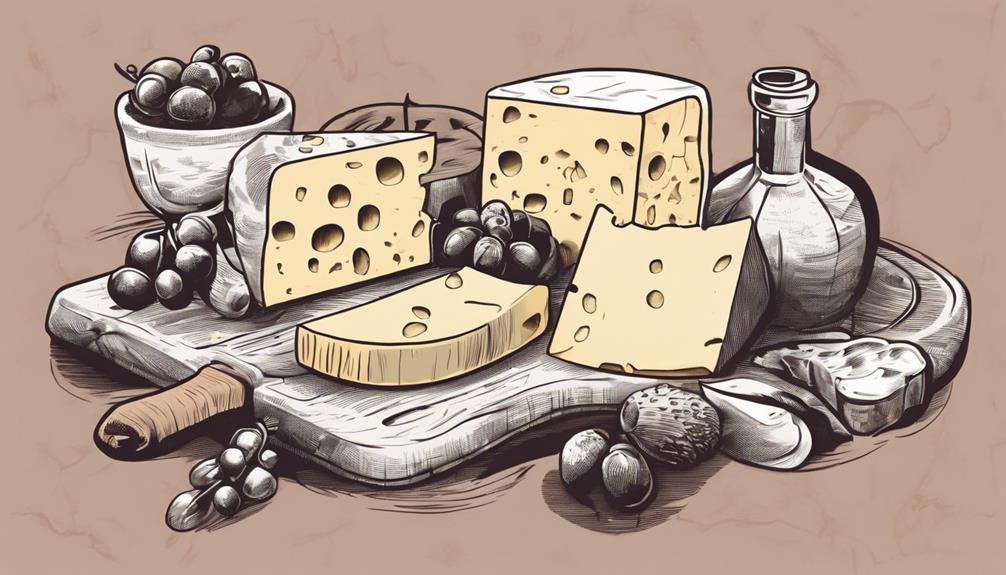See All: Cheese Making
Watch How To Do This Here…
YES! You can make cheese at home. Take our FREE 4-Part video training series to simplify cheesemaking for everyone. No waste. No overwhelm. No missing steps. You can make delicious, healthy cheese, even if you only have access to grocery store milk and regular kitchen equipment…
Click Here To Watch Step By Step Now
“I’ve been making cheese for a few months now, but sometimes I struggle to know when my cheese is fully ripened. I want to ensure I’m getting the best flavor and texture for each type of cheese I make. Can you provide detailed advice on how to tell when cheese is ready? This would really help me improve my cheese making process.” Thanks, Sarah, Melbourne, Australia.
How Do You Know When Cheese Is Fully Ripened?
Hey Sarah, great question! Making cheese is a journey, and knowing when your cheese is fully ripened is a big part of mastering the craft. Let’s go through some key points you’ll want to consider for determining when your cheese is perfect for consumption.
Understanding Cheese Ripening
Cheese ripening, also known as affinage, is the process where cheese develops its flavor, texture, and aroma. This complex transformation is influenced by factors such as humidity, temperature, and specific bacteria or molds used during aging.
Visual Indicators
The appearance of the cheese can tell you a lot about its readiness. Here are a few visual cues to keep an eye on:
- Color: Mature cheese often has a more vibrant color. For example, aged Gouda turns a deeper yellow or orange compared to its younger version.
- Rind Formation: A fully formed rind can be a good indicator. For instance, a Brie cheese develops a white, bloomy rind when ripened.
- Mold Development: Blue cheeses like Roquefort depend on mold development. The blue-green veins should be evenly distributed.
Texture and Consistency
Texture changes significantly as cheese ripens. Here’s what to look out for:
- Soft Cheeses: Soft cheeses such as Camembert should be creamy and almost oozy when fully ripened. You should be able to cut into the cheese, and it should slightly ooze out.
- Hard Cheeses: Hard cheeses like Parmesan will become crumbly and hard, making them easier to grate. Aged Cheddar should be firm and slightly crumbly.
- Semi-Soft Cheeses: These cheeses, such as Gouda or Edam, should be pliable yet firm when pressed gently. They develop a certain elasticity that indicates their readiness.
Aroma and Flavor
The nose and palate are the best friends of any cheese maker. Pay attention to these aspects:
- Aroma: Fully ripened cheese will typically have a stronger aroma. Aged cheeses might have nutty, earthy, or fruity scents. Brie and other soft-ripened cheeses will smell almost buttery and mushroom-like.
- Flavor: The ultimate test is the taste. A mature cheese will have more complex and intense flavors. Hard cheeses like Gruyère will be nutty and slightly sharp, while soft cheeses will be richer and more flavorful.
Using Tools for Precision
While your senses are valuable, sometimes using tools ensures accuracy:
- Thermometer: For aging cheese, maintaining the correct temperature is crucial. Most cheeses need to be aged in a place with temperatures ranging between 50-55°F (10-13°C).
- Humidity Monitor: Proper humidity levels, typically between 80-90%, help in developing the correct texture and rind.
- Cheese Trier: Especially for large wheels, a cheese trier can be used to extract a small sample without cutting the whole cheese. This helps in checking the inner readiness.
Establishing a Timeline
Different cheeses have varied ripening periods. Here are some general timelines:
- Soft Cheeses: Usually take around 1-2 months.
- Semi-Hard Cheeses: Require a bit longer, typically 3-6 months.
- Hard Cheeses: Aged the longest, often from 6 months to several years.
Each cheesemaker’s environment and method will tweak these timings a bit, so keep detailed notes and adjust as needed.
Why Ripening Matters
Ripening is key to developing distinct characteristics in cheese. By controlling the aging process, you ensure that enzymes and bacteria properly break down proteins and fats. This breakdown results in the texture and flavor that cheese aficionados appreciate.
Practical Examples
Let’s think about a few specific examples:
- Cheddar: A young Cheddar might be mild and creamy, while an aged one will be sharp and crumbly. Taste and texture tests can guide you.
- Brie: When not fully ripened, Brie can be somewhat firm and chalky. Fully ripened Brie will have a creamy, buttery inside with a bloomy white rind.
- Gorgonzola: For a blue cheese like Gorgonzola, watch how the blue veins develop. The more veins and the creamier it becomes, the more mature it is.
Common Mistakes to Avoid
Learning from mistakes is part of the process, Sarah. Here are a few common pitfalls:
- Rushing the Ripening: Be patient. Letting cheese age a bit longer often yields better flavors and textures.
- Improper Storage: Make sure you store cheese in the right conditions. Too much moisture or incorrect temperatures can spoil the cheese.
- Ignoring Small Indicators: Overlooking smaller signs like slight changes in aroma or texture can lead to underripe or overripe cheese.
Final Thoughts…
Sarah, determining when your cheese is fully ripened involves using all your senses, some practical tools, and a good bit of patience. From visual cues to texture and flavor, each aspect plays a critical role. Thanks for your question. Keep at it, and your cheese-making skills will only get better!
Return To: Cheese Making
Free Step By Step Cheese Making Videos…
YES! You can make cheese at home. Take our FREE 4-Part video training series to simplify cheesemaking for everyone. No waste. No overwhelm. No missing steps. You can make delicious, healthy cheese, even if you only have access to grocery store milk and regular kitchen equipment…

